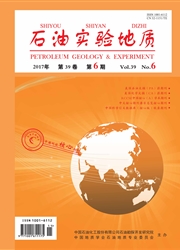

 中文摘要:
中文摘要:
在对典型地震剖面解释和分析基础上,结合区域地质剖面的缩短量和缩短率分析,来确定塔里木盆地巴楚隆起断裂的主要活动期,并探讨断裂分期差异活动特征及其变形机理。巴楚隆起断裂活动主要发生在加里东中期、海西早期、海西晚期、喜马拉雅早期、喜马拉雅中期和喜马拉雅晚期。巴楚隆起断裂活动主要受区域大地构造背景、先存基底断裂、区域滑脱层等因素的控制。洋盆闭合和板块碰撞产生的挤压应力是断裂活动的动力来源。先存基底断裂控制后期断裂的发育位置和展布方向,区域性滑脱层控制断裂的发育和分布层位。
 英文摘要:
英文摘要:
Based on the interpretation and analysis of the typical seismic profiles, we determined the activity phases of the faults in the Bachu uplift by calculating the amounts and rates of shortening of regional geological sections, and discussed the characteristics and deformation mechanism of staging differential activity. Fault activi-ties took place mainly during the middle Caledonian, early Hercynian, late Hercynian, early Himalayan, middle Himalayan and late Himalayan. They were controlled by regional tectonic setting, pre-existing basement faults, regional detachment layer and some other factors. Compressive stress which generated by the closure of oceanic basin and the collision of plates was the dynamic source of the fault activities. The pre-existing basement faults controlled the position and orientation of the later stage faults. The regional detachment layer controlled fault de-velopment and distribution horizons.
 同期刊论文项目
同期刊论文项目
 同项目期刊论文
同项目期刊论文
 Structural deformation and fluid flow from East Sichuan to the northwestern periphery of the Xuefeng
Structural deformation and fluid flow from East Sichuan to the northwestern periphery of the Xuefeng Polygonal faults in the Sanzhao sag of the Songliao basin: their significance in hydrocarbon accumul
Polygonal faults in the Sanzhao sag of the Songliao basin: their significance in hydrocarbon accumul 期刊信息
期刊信息
